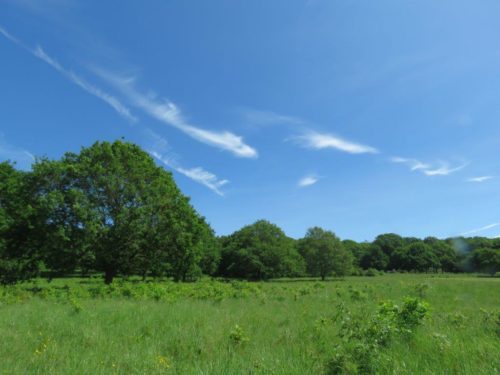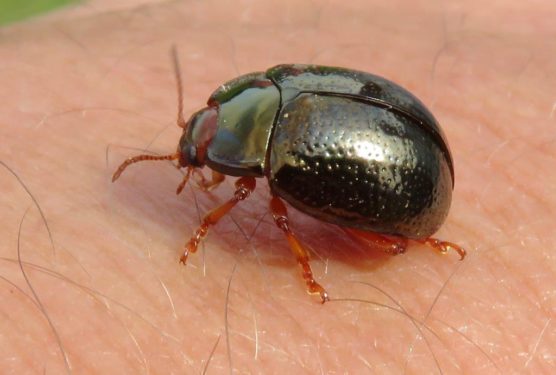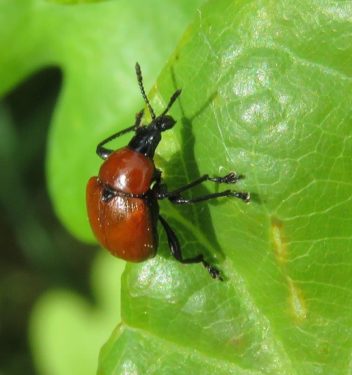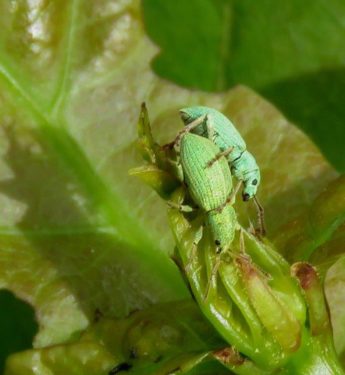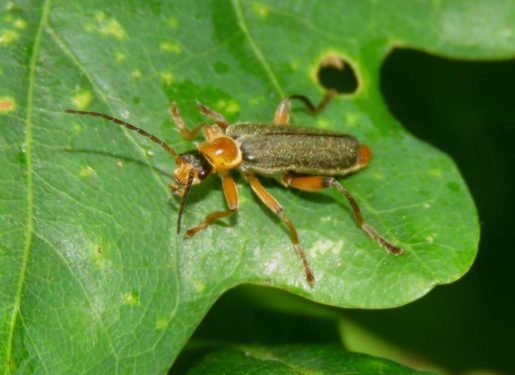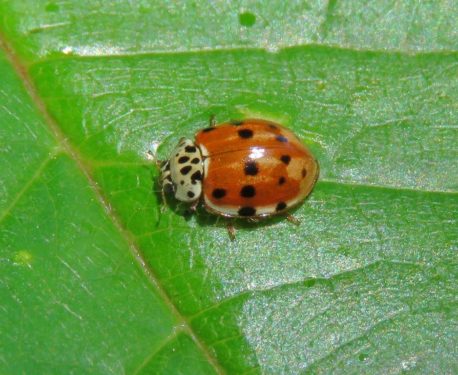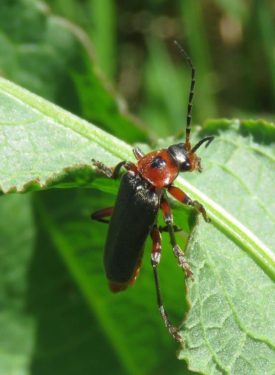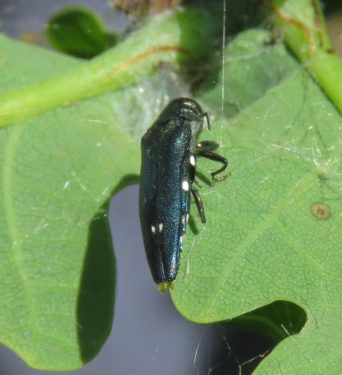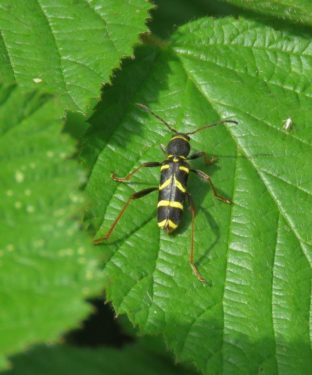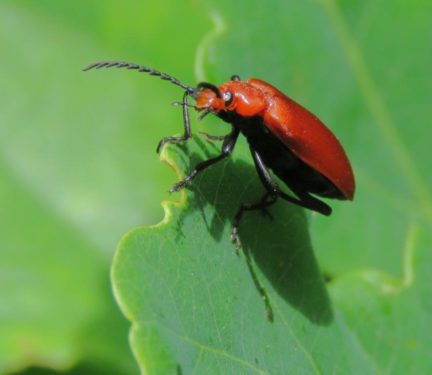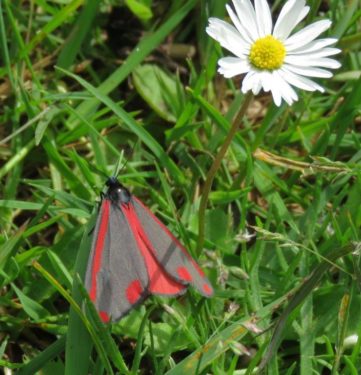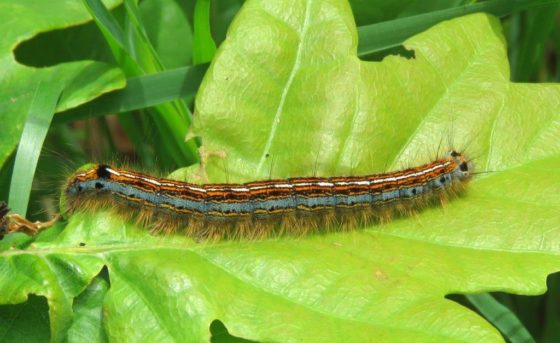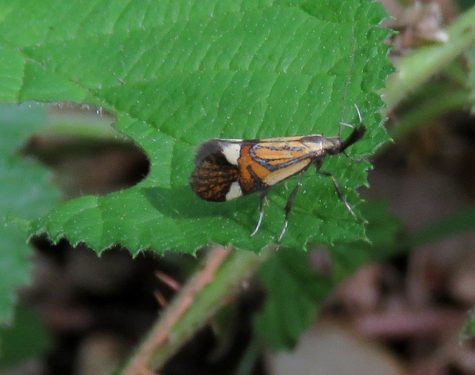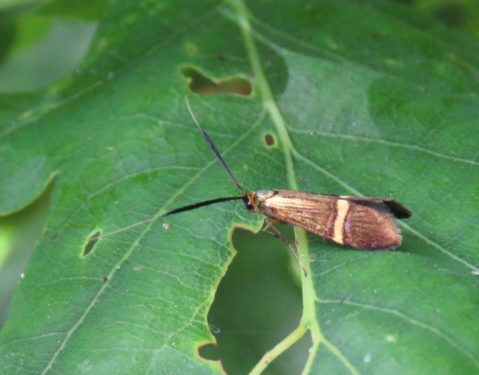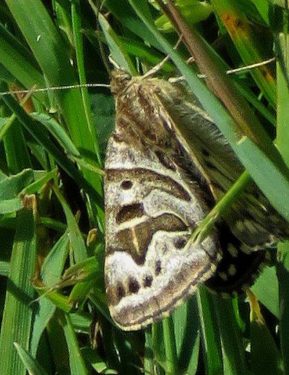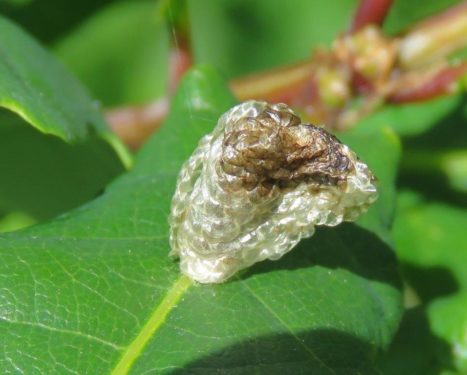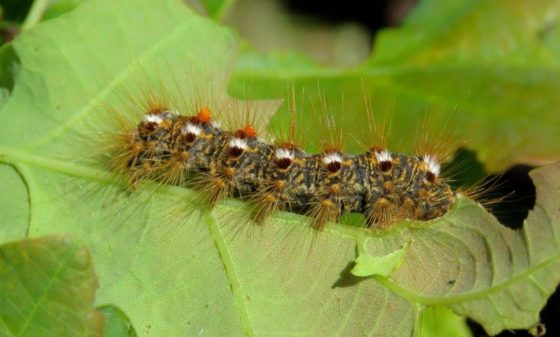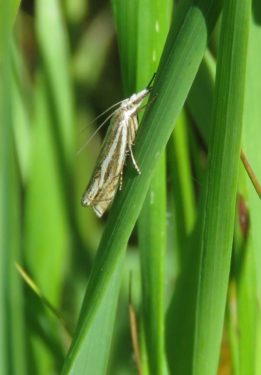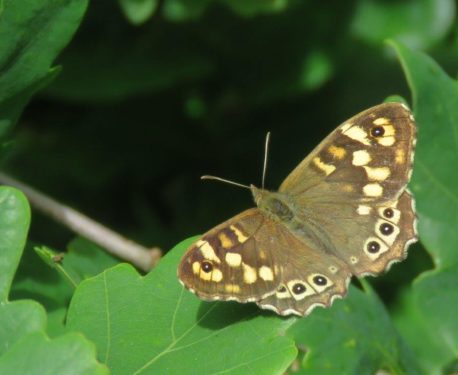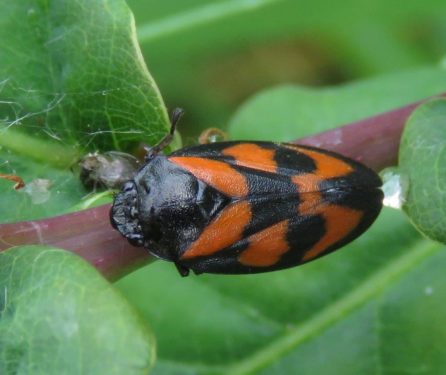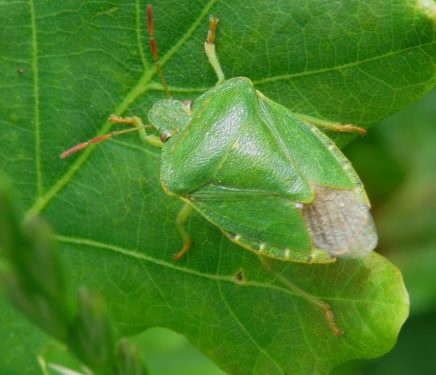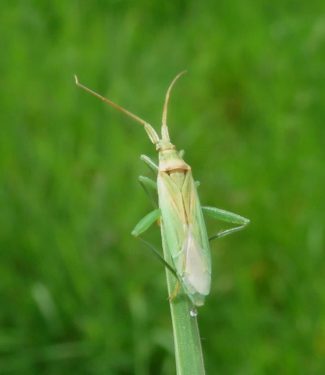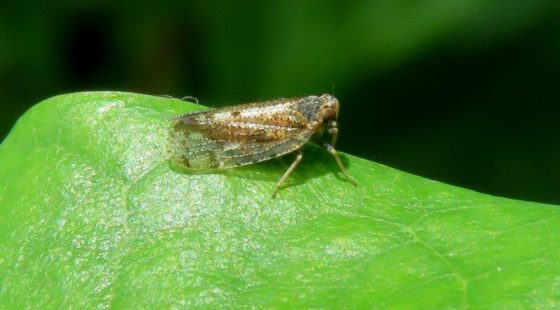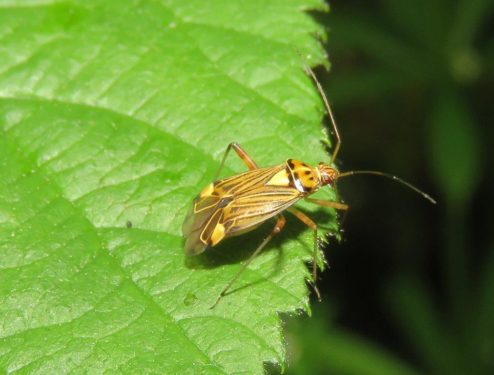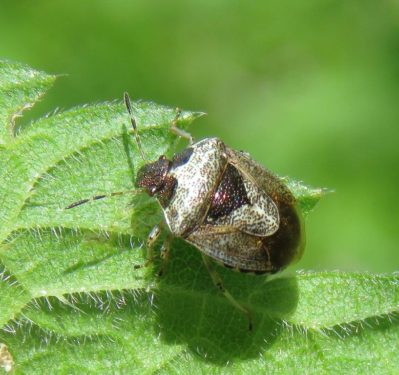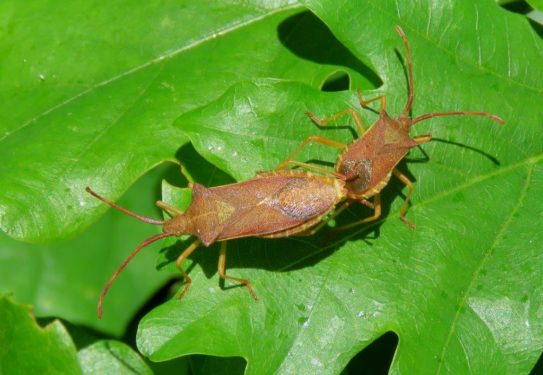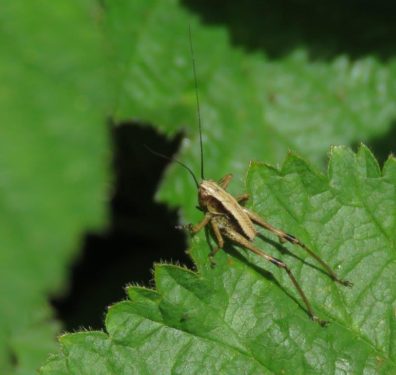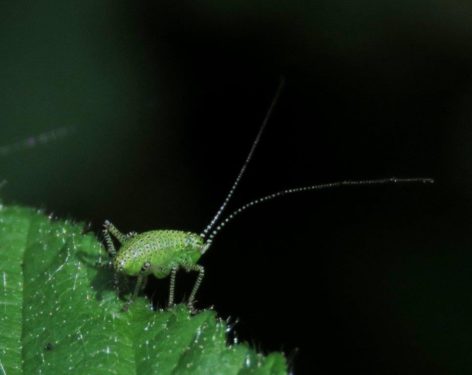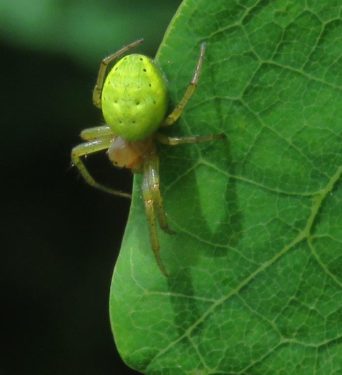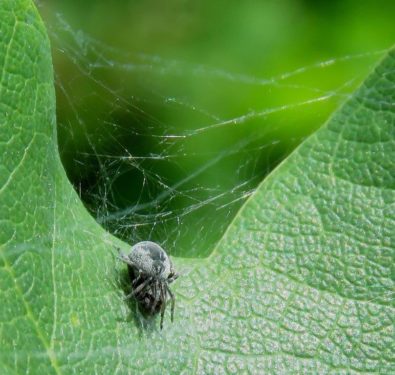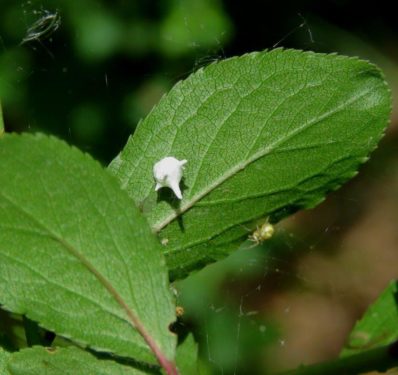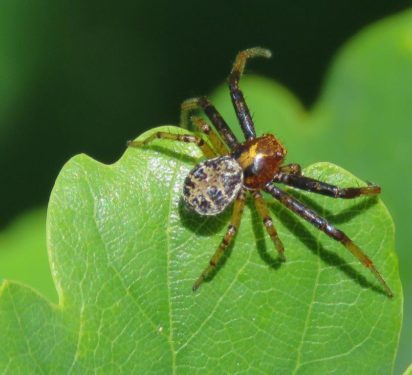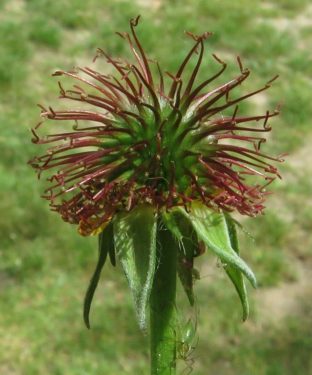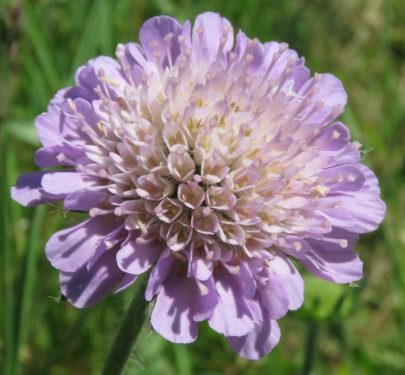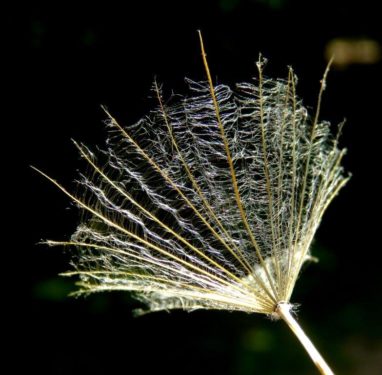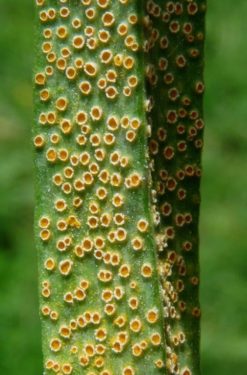Thank you to all the nature-addicts who joined us on Saturday. The warm sunshine and gentle breeze made for very pleasant walks (if 400 metres in two hours qualifies as a walk!), and we certainly found lots to look at. So much so we aren’t going to put many words into this month’s report – but let the pictures speak for themselves. We haven’t even labelled the pictures: please ask if you would like to know what they are…
As we know, as well as being vitally important for our ecosystems, insects vary hugely and are in fact classified into 22 different major groups or ‘orders’, reflecting their respective structures.
Beetles belong to the order Coleoptera. Coleos – a shield, pteron – wing, and have hard wing cases which protect them. They probably outnumber in species every other order of animal.
Moths belong to the order Lepidoptera Lepidos – a scale, pteron – wing. We discovered several types of moth, plus a couple of ‘cases’, ie pupae where a moth has chewed out a section of leaf, to a very precise pattern, (how DO they know this?) as well as a couple of magnificent moth caterpillars. Sadly we were a week or two early for the spotted Burnet moths which will soon be abundant on Lower Lodge. Butterflies are also Lepidopteran, but relatively few were out and about on Saturday, apart from Common Blues and Speckled Woods.
True bugs’ (as opposed to ‘bugs’ being the general term used for many insects) belong to the order Hemiptera Hemi – half, pteron – wing. This is an extremely varied order, and are further classified into suborders.
The three orders listed so far are three of the ‘big five’ insect groups, the others being Diptera (‘two-winged’) – Flies; and Hymenoptera (‘veil-winged’ – bees, wasps and ants). There are however many other smaller orders. Grasshoppers and crickets belong to the order Orthoptera Orthos – straight, pteron – wing. Being early in the season, the bush crickets we found were nymphs, i.e. in their early stages of development. They pass through a number of ‘instars’, shedding their skins as they go, before becoming adult.
Spiders – of course, these aren’t insects (ie they don’t have the requisite 6 legs) but are such interesting critters we could not possibly ignore them!
And of course Chris was also looking out for what was flowering, photographing a few flower heads (including the first Field Scabious, awaiting its complement of Burnet moths) and seed-head structures as he went, together with the remarkable fruiting structures of the Goat’s-beard Rust-fungus.
Happy nature watching.
